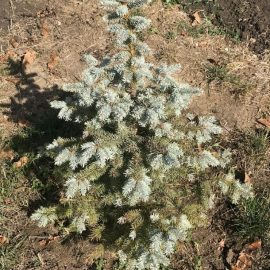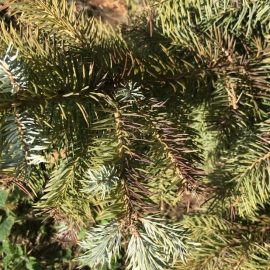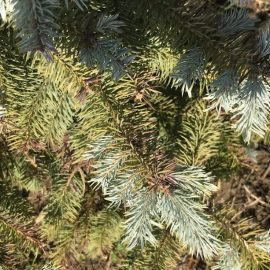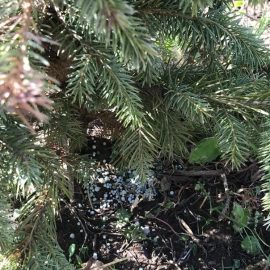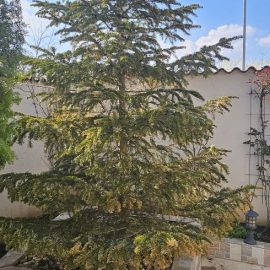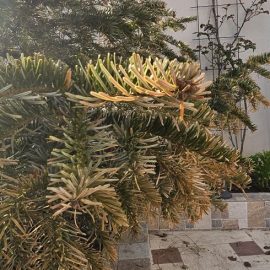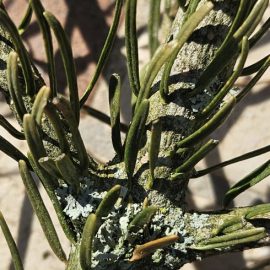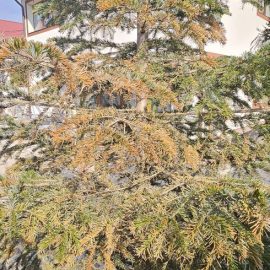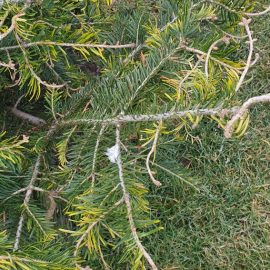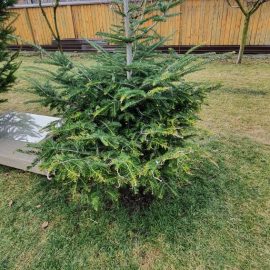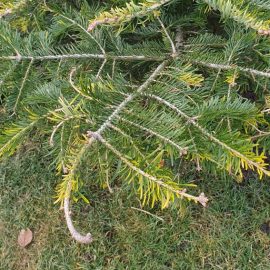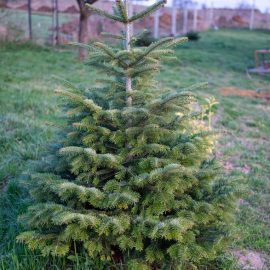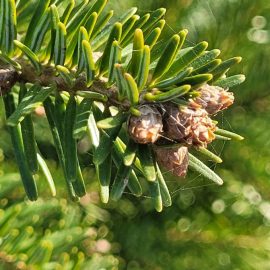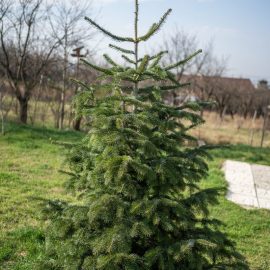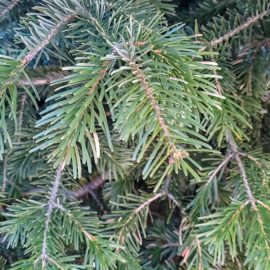Fir, planting guide and care work
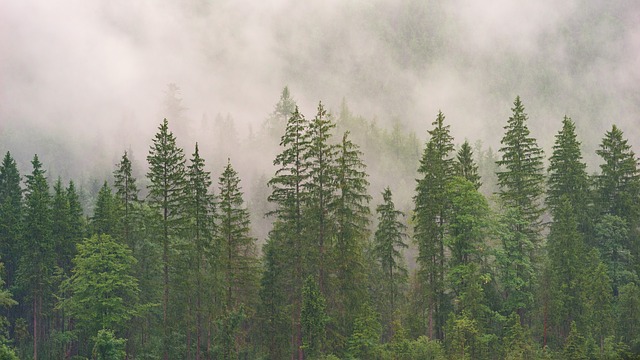
The Fir tree (Abies) is part of the Pinaceae family that includes approximately 48-56 species of coniferous tree plants, spread mainly in mountainous areas of temperate climates. They are massive trees that can reach heights of up to 80 m, with a trunk diameter between 0.5 and 4 m at maturity. The species of the genus Abies differ from the other genera of the Pinaceae family by the appearance of the acicular leaves, which are less sharp and placed on the branch at the same level. At the same time, in the case of fir trees, the cones have a vertical, ascending position, being similar to candles. They disintegrate at maturity.
Abies alba (European silver fir)
European silver tree is specific to mountainous areas in Europe but is also found in the US and Canada. It is a first-size tree with a pyramidal crown and a deep, pivoting root. It can reach maximum heights of 50-60 m, with a trunk diameter of up to 1.5 m. The leaves are acicular, have a flattened shape, and are arranged on a single level. The upper part is glossy, and dark green, and the lower part is whitish and has two white stomata stripes. The fruits are represented by erect, large cones, with dimensions of 9-17 cm long and 3-4 cm wide. They carry 150-200 scales that fall to maturity and inside which are the seeds, grouped in pairs. The flowers appear in spring, on the newly grown tops, they have a conical shape, are elongated, and are colored in pale yellow.
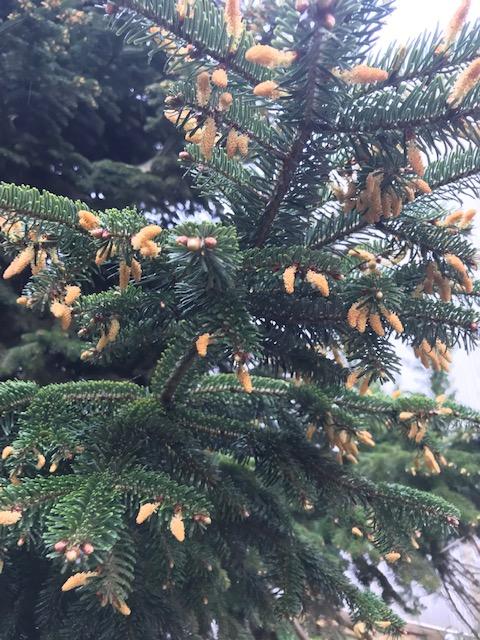
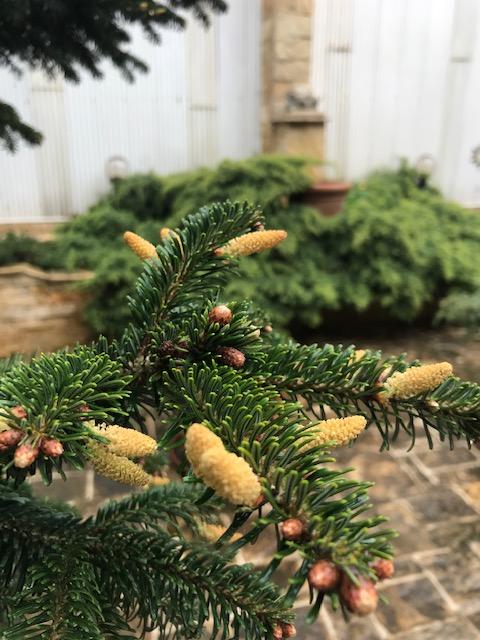
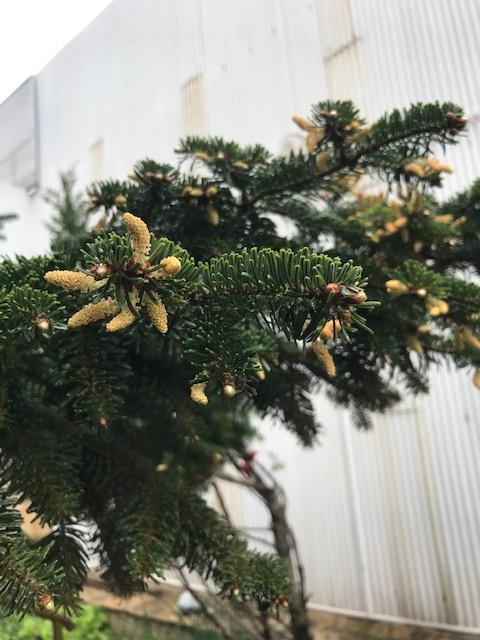
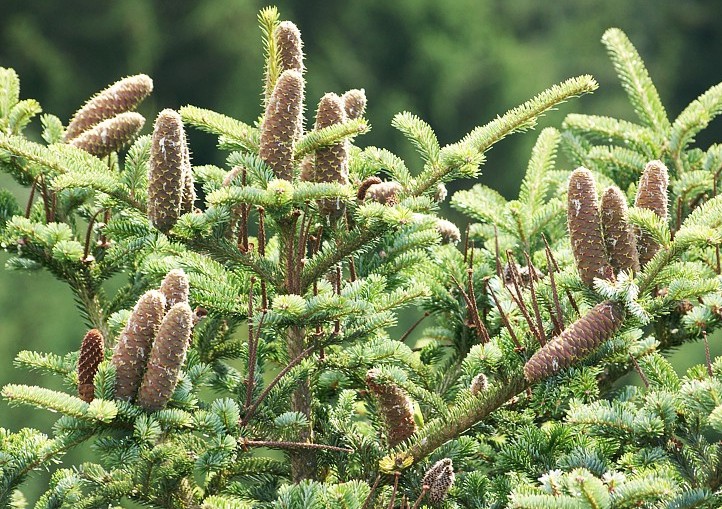
Abies balsamea (Balsam fir)
It is a tree with a narrow and dense crown, size II, native to the United States and Canada; it can reach heights of up to 14-20 m. Balsam fir has dark green foliage, with shiny and flattened needles, which have two white stomata stripes on the underside. It has a strong characteristic smell (aromatic). The young specimens have smooth, gray bark with resin drops, and the mature ones have rough bark, with cracks and resin leaks. The cones are 4-8 cm long, straight up, have a purple color, and lose their seeds in autumn.
Abies cephalonica (Greek fir)
It is a size I-II tree that can reach a height of 25-35 m, rarely 40 m, with a trunk diameter of up to 1 m, native to the mountainous regions of Greece. It differs from the other species by its thin and sharp needles, dark green and glossy. On the underside, the needles have two white-blue stomata stripes. The cones are similar to those of Abies alba.
Abies concolor (White fir)
It is a size I fir tree, which can grow up to 60 m tall, native to North America. The crown is conical, regular, and of a light silver shade, due to the green-blue needles. They are large, flattened, irregularly arranged, with numerous stomata lines, which give it its specific appearance. The cones are 6-12 cm long and 4 cm wide and are green-purple. The cultivar “Candicans” has a lighter shade, with whitish-gray needles.
Abies homolepis (Nikko fir)
Originally from Japan, it is a tall tree, which can grow to a height of 40 m, with a trunk diameter of 1.5 m. The crown is conical, with dense needles, dark green, glossy on the top side, and whitish on the underside (due to the stomata stripes). The cones are 6-12 cm long and 3-4 cm wide and are blue-purple.
Abies koreana (Korean fir)
Originally from South Korea, it is a size III fir tree, which can grow to a height of 18 m. The trunk has a diameter of 0.7 m and has gray-brown resin leaks. It has a conical, bushy crown, with small needles, curved upwards. They are green and glossy on the top side and whitish on the underside. The cones are small, 4-7 cm long and 2 cm wide, the young ones are dark, blue-purple, with yellow-green bracts.
Abies lasiocarpa var. arizonica (Rocky Mountain fir)
A size II tree, native to Arizona and New Mexico, decorative thanks to its conical crown, with a shade of blue. The needles grow curved upwards, having blue-gray stripes on both sides.
Abies nordmanniana (Nordmann fir)
Similar to the European silver fir, it is a tall tree, size I, and it is distinguished through its pyramidal crown, which is dense and regular. It is native to the mountainous areas of the Black Sea Basin (Turkey, Georgia, Caucasus mountains), and it can reach a height of 60 m, with a trunk diameter of 2 m. The acicular leaves are flat, dark green, glossy, and on the underside, it has two white stripes of stomata. The cones have a length between 10 and 20 cm and a width of 4-5 cm, being similar to those of European silver fir.
Abies procera (Noble fir)
It is a tall tree with a narrow, pyramidal crown, native to the United States. It can grow up to 70 m in height, with a trunk diameter of 2 m. The needles grow dense, forming a “brush”, which is sharp and colored green with shades of blue. The cones are oriented upwards, are long (11-22 cm), and have purple scales, with yellow-green bracts.
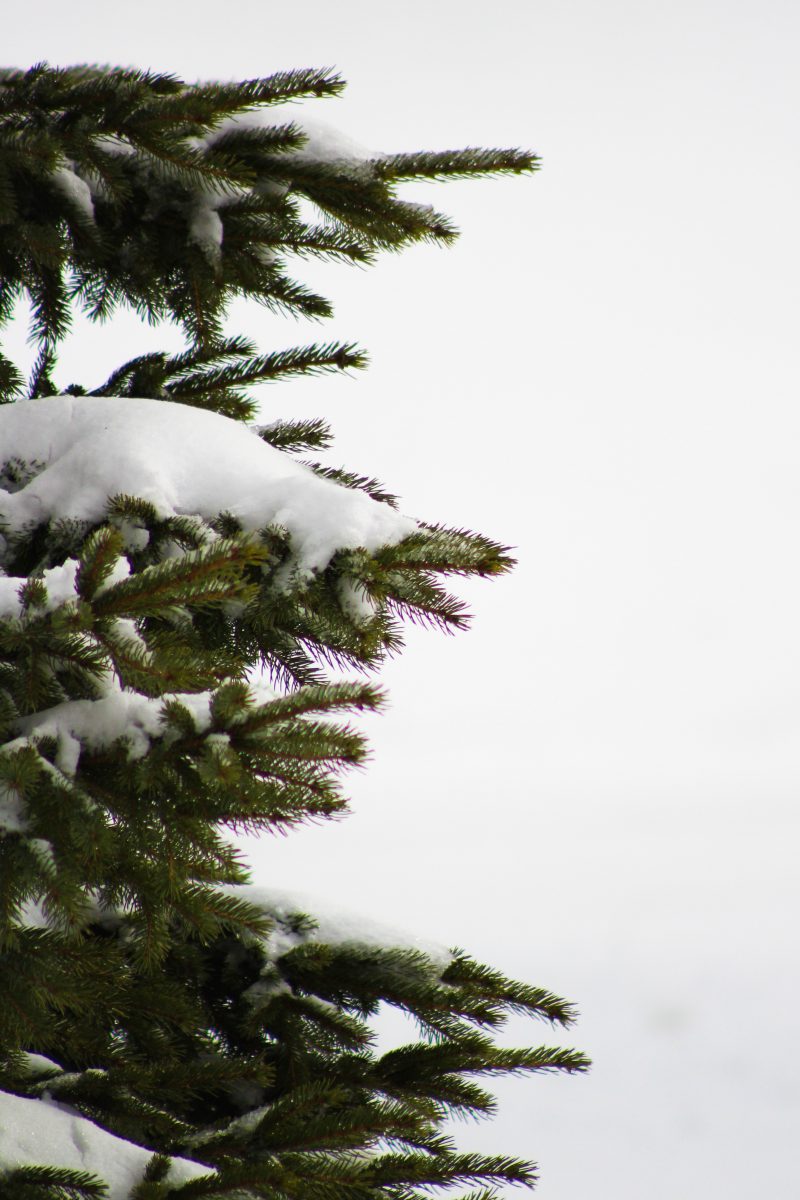
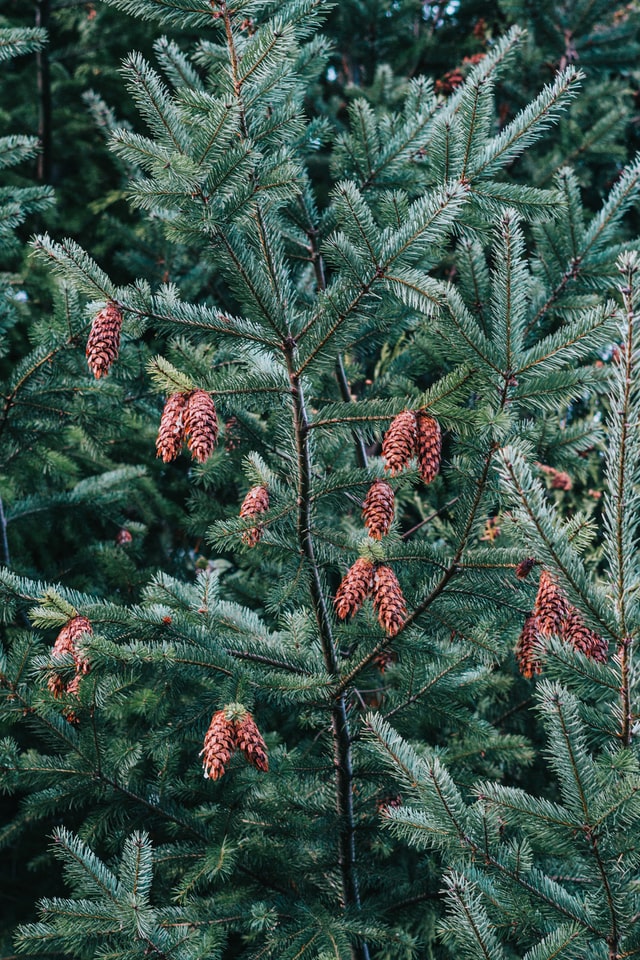
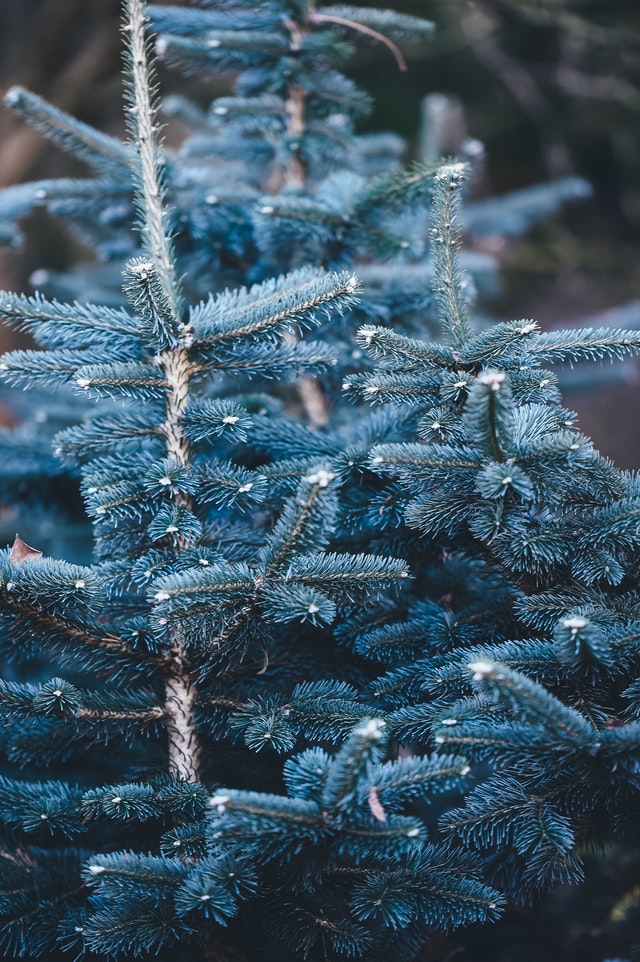
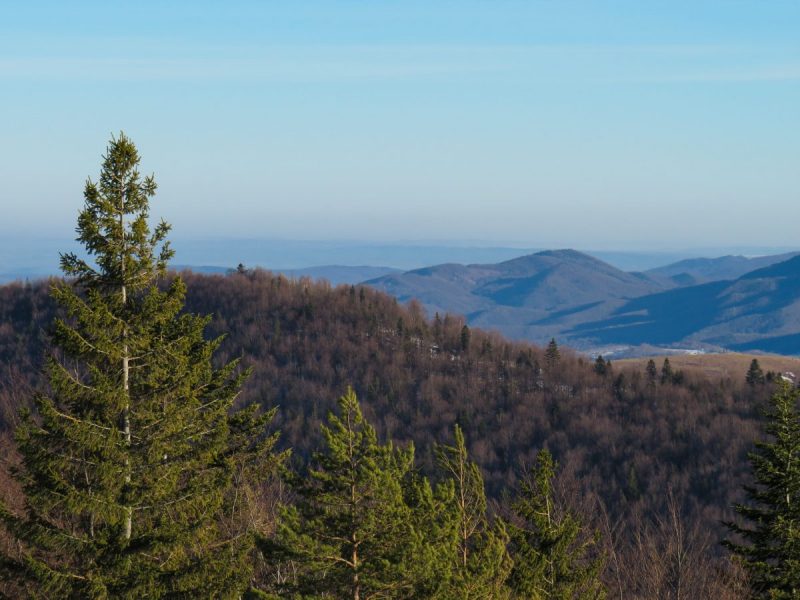
Environmental conditions
Light. In general, fir trees with light-colored needles grow well in brighter places, compared to the European silver fir and Nordmann fir, which should be placed in shady areas (especially the saplings, that are sensitive to direct sunlight).
Soil. Fir trees do not have high soil demands but grow well in loamy soils. Exceptions are the Balsam fir and Noble fir, which are sensitive to calcareous soils.
Temperature. In general, temperate fir species tolerate a colder climate. Being specific to mountain areas, the European silver fir is resistant to frost, to temperatures of up to -27° C. However, in some cases, it can be affected by late spring frosts. Species native to the subtropical area (Korean fir, Noble fir, Greek fir) prefer a milder climate.
Watering
Watering the fir trees is only necessary during the summer months when the soil is dry for long periods. It is important to ensure adequate humidity (using an adequate volume of water, avoiding the excess, more precisely, the soil should not be wet), and the roots must have time to breathe between irrigations.
Fertilization
To stimulate abundant growth of trees and shrubs during the growing season, it is recommended to apply specific fertilizers.
Recommended products
-
You can find products on a different store
Change Store -
You can find products on a different store
Change Store -
You can find products on a different store
Change Store -
You can find products on a different store
Change Store -
You can find products on a different store
Change Store -
You can find products on a different store
Change Store -
You can find products on a different store
Change Store -
You can find products on a different store
Change Store -
You can find products on a different store
Change Store -
You can find products on a different store
Change Store -
You can find products on a different store
Change Store -
You can find products on a different store
Change Store -
You can find products on a different store
Change Store -
You can find products on a different store
Change Store -
You can find products on a different store
Change Store -
You can find products on a different store
Change Store -
You can find products on a different store
Change Store -
You can find products on a different store
Change Store -
You can find products on a different store
Change Store -
You can find products on a different store
Change Store -
You can find products on a different store
Change Store -
You can find products on a different store
Change Store -
You can find products on a different store
Change Store -
You can find products on a different store
Change Store
Planting
It can be done from autumn, after the first frost, until spring, when the soil is not frozen and there is no danger of freezing. To be successful, the fir trees are recommended to be planted when they are still saplings, so they will adapt more easily to the new environmental conditions. Be sure to purchase planting material from authorized nurseries. Immediately after planting, tamp down the soil around the seedlings and water thoroughly to compact the soil and eliminate air pockets around the roots. After that, the seedlings have to be watered regularly, so that the soil stays moist, but avoid creating too much moisture at the root level.
Propagation
Propagation can be done through several methods:
- seed propagation: the cones must be harvested during the first-fruits phase before the scales naturally spread. It is advisable to collect the seeds at the base of the cones, the ones at the top being usually sterile. They should be kept in a cool and airy place until autumn when it is the best time to sow.
- propagation through grafting: it is usually used for silver fir trees, by grafting on the rootstock of Abies alba. It is a difficult method to execute, so it is recommended to be performed only by specialists.
- propagation through cuttings: plants resulting from cuttings have irregular growth, so it is not a widely used method.
In addition:
- fir trees have high longevity;
- the Nikko fir, White fir, and Korean fir are better suited for urban environments;
- the White fir and the Nikko fir have faster growth, while the Noble fir and the Caucasian fir grow slowly in the beginning and faster when they reach maturity;
- in lowland areas, fir trees have a shorter longevity;
- fir trees used as Christmas trees, in pots, do not resist inside for more than 7 days as they will start to dry out;
- fir species are prone to attacks by scale insects, bark beetles, wasps, etc.














































































































































































































































































































































































































































